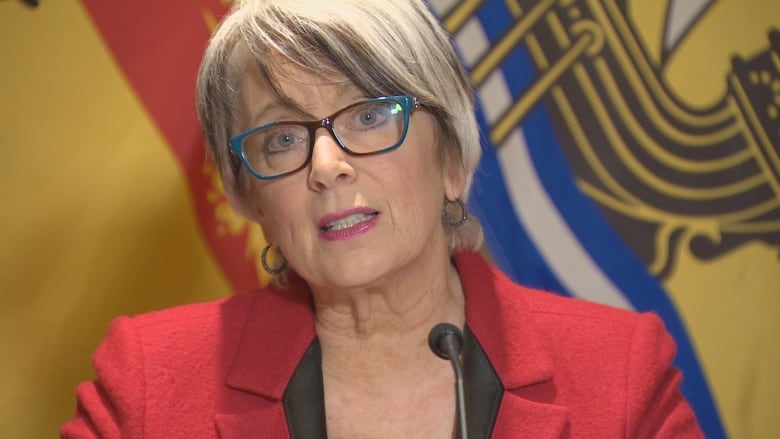New Brunswick's unbalanced budgets concern Atlantic Chamber of Commerce
Cathy Rogers delivers Gallant government's 3rd budget Tuesday with no intent to balance books until 2020-21

While the Gallant government won't release the details of its 2017-18 budget until 1 p.m. Tuesday in the New Brunswick Legislature, one thing is known: it won't be balanced.
That's a concern to the Atlantic Chamber of Commerce, which has called for the province to "immediately table a balanced budget by creating efficiencies and reducing spending in all departments, including health and education."
The Liberal government has previously stated its target date for balancing the budget is 2020-21. Meanwhile, the provincial debt keeps growing.
In the province's third-quarter fiscal update on Jan. 27, the debt was forecast to hit $13.9 billion on March 31, 2017, or about $18,600 for every New Brunswicker.
- Deficit forecast still on track for $231M, says finance minister
- Roger Melanson hikes HST, cuts bureaucracy in Liberal budget
- Infrastructure budget up $31.7M from original plan
- New Brunswick budget hits up wealthy, seniors for cash
In her third-quarter fiscal update on Jan. 27, Rogers said the province expects to post a deficit of $231 million in 2016-17.
Right now it's eating up so much of the government's revenues it's threatening the ability to deliver government services.- Glenn Davis, Atlantic Chamber of Commerce
Rogers said Monday that New Brunswickers can "absolutely" expect a smaller deficit for 2017-18.
"Thus far we've been meeting or exceeding our targets," said Rogers.
Through its first two budgets, the government of Brian Gallant is on pace to have reduced the deficit by a total of $130 million.
That pace isn't fast enough for the Atlantic Chamber of Commerce.
"The problem is until we get to a balanced and a surplus budget, the provincial debt is going to keep growing," said Glenn Davis, vice-president of the Atlantic Chamber of Commerce.
"Right now it's eating up so much of the government's revenues it's threatening the ability to deliver government services."
In its 2016-17 budget, the government put the cost of its payments to service the public debt at $700 million, making it the province's fifth-highest expenditure after the annual amounts spent on the departments of Health, Social Development, Education and Early Childhood Development and general government.
"The concept would be that if there were more revenues available to government, we could lower taxes to individuals and businesses and get the economy growing," said Davis.

